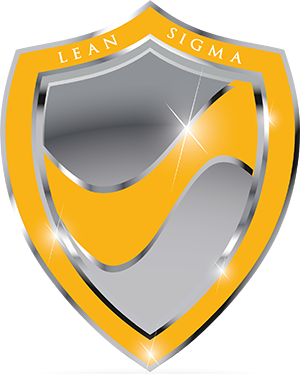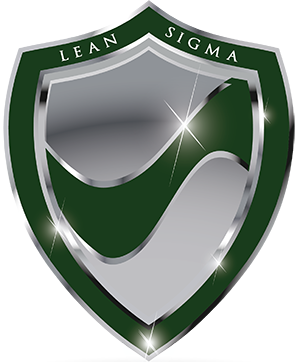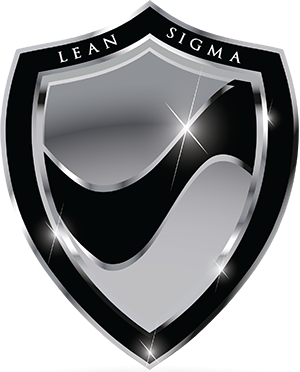Certification Course Details
| Course Title | Lessons | Quizzes | Tests |
Exam Attempts | Questions |
Pass Score |
Time Limit |
Pass Rate |
Sat. Rating | PDU |
Earned Designation |
Avg. Completion | Price |
|---|---|---|---|---|---|---|---|---|---|---|---|---|---|
| Lean Six Sigma Black Belt | 21 | 21 | 5 | 2 | 150 | 80% | 3Hrs. | 92.6% | 96.3% | 105 | LSSBB | 51 Days | $995 |
| Lean Six Sigma Green Belt | 17 | 17 | 5 | 2 | 100 | 80% | 2Hrs. | 94.2% | 94.5% | 85 | LSSGB | 51 Days | $795 |
| Lean Six Sigma Yellow Belt | 11 | 11 | 3 | 2 | 50 | 80% | 1Hr. | 97.9% | 96.4% | 50 | LSSYB | 27 Days | $595 |
| . | |||||||||||||
| Six Sigma Black Belt | 19 | 19 | 5 | 2 | 150 | 80% | 3Hrs. | 92.6% | 96.3% | 100 | SSBB | 51 Days | $795 |
| Six Sigma Green Belt | 15 | 15 | 5 | 2 | 100 | 80% | 2Hrs. | 94.2% | 94.5% | 80 | SSGB | 51 Days | $595 |
| Six Sigma Yellow Belt | 9 | 9 | 3 | 2 | 50 | 80% | 1Hr. | 97.9% | 96.4% | 45 | SSYB | 27 Days | $395 |
Courses Do Not Require Projects | Statistical Software is Not Required | Default Statistical References: Minitab
SigmaXL and JMP Versions are Available on Request | Curriculum Compatibility: Minitab v.22, SigmaXL v.10, JMP v.18
KEY: LSS = Lean Six Sigma | SS = Six Sigma | BB = Black Belt | GB = Green Belt | YB = Yellow Belt | PDU = Professional Development Units
Core Curriculum
Lean Six Sigma Becomes Six Sigma by Removing: Lean Fundamentals and Lean Controls
-
Define Phase
Overview of Six Sigma
Six Sigma Fundamentals
Lean Six Sigma Projects
Lean Fundamentals
Define Phase Test
-
Measure Phase
Process Definition
Six Sigma Statistics
Measurement Systems
Process Capability
Measure Phase Test
-
Analyze Phase
Patterns of Variation
Inferential Statistics
Hypothesis Testing
Hyp. Tests Normal
Hyp. Tests Non-Normal
Analyze Phase Test
-
Improve Phase
Simple Linear Regression
Multiple Regression
Design of Experiment
Full Factorial DOE
Fractional Factorial DOE
Improve Phase Test
-
Control Phase
Statistical Process Control
Six Sigma Control Plans
Lean Controls
Control Phase Test
Certification Exam
-
Define Phase
-
Overview of Six Sigma
What is Six Sigma
Six Sigma History
Six Sigma Approach Y = f(x)
Six Sigma Methodology
Roles & Responsibilities -
Six Sigma Fundamentals
Defining a Process
VOC & CTQ's
QFD
Cost of Poor Quality
Pareto Analysis (80:20 rule) -
Lean Six Sigma Projects
Six Sigma Metrics
Rolled Throughput Yield
Business Case & Charter
Project Team Selection
Project Risk Management
Project Planning -
Lean Fundamentals
Lean and Six Sigma
History of Lean
Seven Deadly Muda
Five-S (5S)
Define Phase Test
-
Measure Phase
-
Process Definition
Cause & Effect Diagram
Cause & Effect Matrix
Process Mapping
FMEA
Theory of Constraints -
Six Sigma Statistics
Basic Statistics
Descriptive Statistics
Distributions & Normality
Graphical Analysis -
MSA
Precision & Accuracy
Bias, Linearity & Stability
Gage R&R
Variable & Attribute MSA -
Process Capability
Capability Analysis
Concept of Stability
Attribute vs Discrete
Monitoring Techniques
Measure Phase Test
-
Analyze Phase
-
Patterns of Variation
Multi-Vari Analysis
Classes of Distributions -
Inferential Statistics
Understanding Inference
Sampling Techniques
Sample Size
Central Limit Theorem -
Hypothesis Testing
Hypothesis Testing
Statistical Significance
Risk; Alpha & Beta
Types of Hypothesis Tests -
Hyp. Tests Normal
1-sample t-test
2-Sample t-test
Paired t-test
1-sample variance
One Way ANOVA -
Hyp. Tests Non-Normal
Mann-Whitney
Moods Median
Kruskal-Wallis / Friedman
1 Sample Sign & Wilcoxon
1 & 2 Sample Proportions
Chi-Squared
Test of Equal Variances
Analyze Phase Test
-
Improve Phase
-
Simple Linear Reg.
Correlation
X-Y Diagram
Regression Equations
Residuals Analysis -
Multiple Regression
Non-Linear Reg.
Multiple Linear Reg.
Confidence Intervals
Residuals Analysis
Box-Cox Transformation
Stepwise Regression
Logistic Regression -
Design of Experiment
Experiment Objectives
Experimental Methods
DOE Design Considerations -
Full Factorial DOE
2k Full Factorial Designs
Linear & Quadratic Models
Orthogonal Designs
Fit, Model & Center Points -
Fractional Factorial DOE
Fractional Designs
Confounding Effects
Experimental Resolution
Improve Phase Test
-
Control Phase
-
SPC
Data Collection for SPC
Individuals Charts
Xbar Charts
Proportions Charts
CumSum, EWMA Charts
Control Chart Anatomy
Subgroups & Sampling
Control Limits -
Lean Controls
Control Methods for 5S
Kanban
Poka-Yoke -
Six Sigma Control Plans
Cost Benefit Analysis
Control Plan Elements
Response Plan Elements
Control Phase Test -
Certification Exam
Six Sigma and Lean Six Sigma Course Compositions
| Lesson | Course --> | LSSBB | SSBB | LSSGB | SSGB | LSSYB | SSYB |
|---|---|---|---|---|---|---|
| DEFINE PHASE | ||||||
| Six Sigma Overview | ||||||
| Fundamentals of Six Sigma | ||||||
| Lean Six Sigma Projects | ||||||
| Lean Fundamentals | ||||||
| Define Phase Test | ||||||
| MEASURE PHASE | ||||||
| Process Definition | ||||||
| Six Sigma Statistics | ||||||
| Measurement Systems Analysis | ||||||
| Process Capability | ||||||
| Measure Phase Test | ||||||
| ANALYZE PHASE | ||||||
| Patterns of Variation | ||||||
| Inferential Statistics | ||||||
| Hypothesis Testing | ||||||
| Hypothesis Tests Normal Data | ||||||
| Hypothesis Tests Non-Normal Data | ||||||
| Analyze Phase Test | ||||||
| IMPROVE PHASE | ||||||
| Simple Linear Regression | ||||||
| Multiple Regression | ||||||
| Design of Experiment | ||||||
| Full Factorial Experiments | ||||||
| Fractional Factorial Experiments | ||||||
| Improve Phase Test | ||||||
| CONTROL PHASE | ||||||
| Lean Controls | ||||||
| Statistical Process Control | ||||||
| Six Sigma Control Plans | ||||||
| Control Phase Test | ||||||
| CERTIFICATION EXAM |
KEY: LSS = Lean Six Sigma | SS = Six Sigma | BB = Black Belt | GB = Green Belt | YB = Yellow Belt
Six Sigma Certification Courses
Six Sigma Yellow Belt Certification

Six Sigma Green Belt Certification

Six Sigma Black Belt Certification

Lean Six Sigma Certification Courses
Lean Six Sigma Yellow Belt Certification

Lean Six Sigma Green Belt Certification

Lean Six Sigma Black Belt Certification


